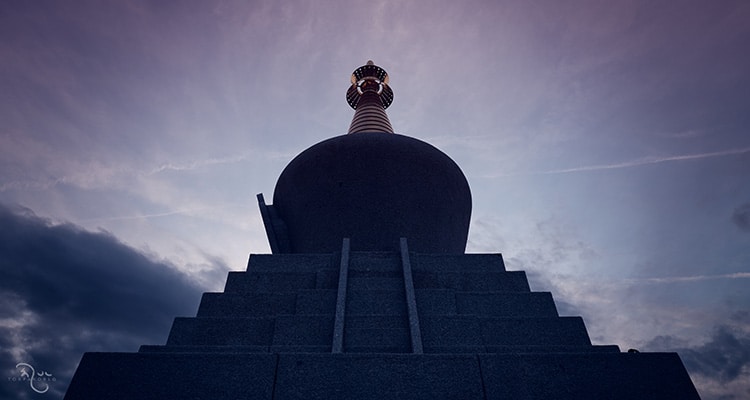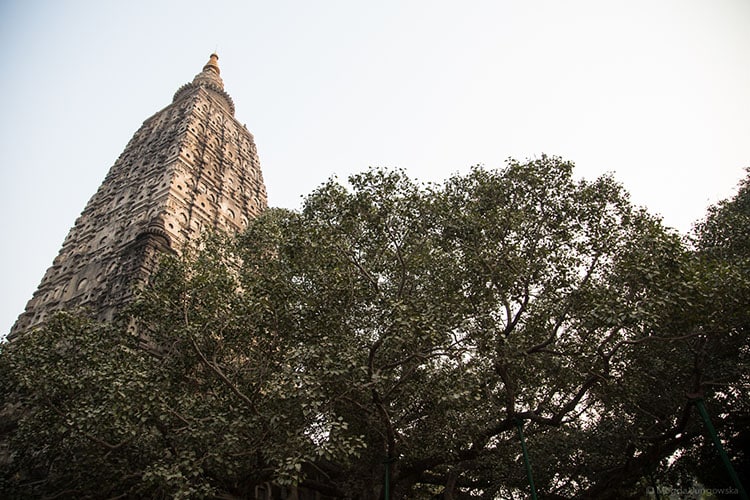The Relationship Between Shamatha and Vipashyana Meditation
Category: Buddhist Meditation | Buddhist Path | How to Meditate | Mind Trainer Articles

Two Types of Buddhist Meditation Practice
Buddhist meditation is made up of two main types called shamatha and vipashyana. We translate these terms as mindfulness and awareness, but it is useful to understand the root words that in themselves have a lot of meaning. Shamatha is a Sanskrit word meaning the development of peace. In Tibetan, it is called shiné, and in Pali, samatha. Vipashyana is the Sanskrit word, or vipassana in Pali, or lhakthong in Tibetan. Lhak means clear and thong means seeing, so vipashyana means clear seeing. Vipashyana is also translated generally as insight. All Buddhist meditation falls into these two types: shamatha and vipashyana.
About Shamatha Meditation
Shamatha is the development of peace, well-being, or ease. The way we develop ease is to have the mind focus naturally on its object. When the mind is not at peace, it’s jumping around, thinking about many different things, or thinking of one thing and then the opposite, this or that. Interestingly, when the mind focuses on an object, it tends to relax. There’s a natural peace and calm that comes from focus.
An important difference between vipashyana and shamatha meditation is that while shamatha is essential in Buddhist practice, it is not a practice that in itself leads to liberation. It leads to a peaceful state of mind. Buddhists do not have a monopoly on shamatha meditation. Many different types of meditation in other traditions rely on focusing the mind on an object. For example, in prayer, you focus on making a wish or a devotional aspiration to a divine being. We could say that shamatha is a common or ordinary meditation path as mindfulness is practiced in many traditions.
Shamatha As The Antecedent To Vipashyana
Mental focus is important because without a foundation of calmness, you can’t develop insight. Imagine that insight is like a flame in the wind. If the mind is busy, it will just keep blowing out that insight. There’s no stability. Shamatha is like putting a glass cover around the candle so that the flame can burn steadily.
Once we have a steady mind, a sense of relaxation, and the ability to focus, then we’re available for insight meditation or vipashyana. So, first developing shamatha is typically how we practice.
About Vipashyana Meditation
There are two types of vipashyana practice, analytical and non-analytical. Analytical meditation uses the intellect, the qualities of the rational mind, to pierce into a deeper understanding. For example, we could have a vipashyana meditation on the impermanence of the physical world, ourselves and our bodies. It is a conceptual meditation, but we use the conceptual meditation to develop insight. In this case, we might experience the insight that things are not as real, stable, and permanent as we think they are. We use analysis to understand reality and our mind more clearly.
Analytical meditation, a form of contemplation practice, is a very powerful and useful method for giving rise to insight about the world and our mind. But the most special part of vipashyana is non-analytical, non-conceptual vipashyana. In this type of practice, you go beyond the rational, thinking mind and focus on the nature of mind itself.
Shamatha, Vipashyana And The Nature Of Mind
The Buddhist teachings of the four foundations of mindfulness include mindfulness of mind. The four foundations are categories of shamatha, or mindfulness practice. In mindfulness of mind practice, the object of meditation is the mind and the movement of mind (thoughts, emotions, and energy). Vipashyana, or insight meditation, is more than just mere mindfulness, more than observing the mind. In this practice, we are looking into the mind’s true nature.
What is the mind’s true nature? To fully understand non-conceptual vipashyana, you have to experience it. We can, however, understand the basic quality of insight. Insight, otherwise known as awareness, is not really developed, but comes to you.
Mindfulness, whether focusing on an object or not, necessitates effort in the sense of placing the mind one-pointedly. Mindfulness is in that sense manufactured. Awareness cannot be manufactured. Awareness practice is more about creating a conducive environment in your mind so that awareness can descend.
At first, ‘descending awareness’ may sound abstract. But we’ve all experienced insight in our ordinary lives. Sometimes in the shower, when you wake up from a good night’s sleep, or as you’re randomly thinking about something, there’ll be some kind of opening. You realize some kind of truth that you didn’t realize before. In that sense, awareness comes to us. Awareness is the mind experiencing insight into itself.
Unlike shamatha, vipashyana meditation does lead to liberation. This is the special teaching of the Buddha. Shamatha is the foundation or basis for liberation, but vipashyana is what actually unwinds the attachment to self, the mistaken views about who we think we are, and our beliefs about reality.
How To Do Shamatha Vipashyana Meditation
Ideally, as you become more adept in meditation practice, shamatha and vipashyana are practiced together. Some people teach that you learn shamatha first, then vipashyana, and then you combine them into what is called shamatha-vipashyana, a practice we touch on in the Journey to Well-Being. But mindfulness and awareness naturally flow together if practiced properly. The meditation on the outbreath that we use in our Mindworks meditation courses is particularly designed to foster both.
In a shamatha meditation where you are focusing only on an object, such as counting each in and out breath, there’s really not much gap or space for insight. In our meditation on the outbreath, we focus the mind on the breath as it goes out, and then let go. This allows for space to naturally be experienced, which we call the gap. That space has the quality of awareness. This practice introduces you to the experience of vipashyana.
So, shamatha and vipashyana flow together from doing the same form of practice. You’re still watching your breath, your outbreath. It’s just that you become more accustomed to the gap, more accustomed to experiencing the spacious quality of mind. This is the relationship between shamatha and vipashyana. At the moment of enlightenment, the Buddha perfected both. Both shamatha and vipashyana are necessary and they inform each other.








